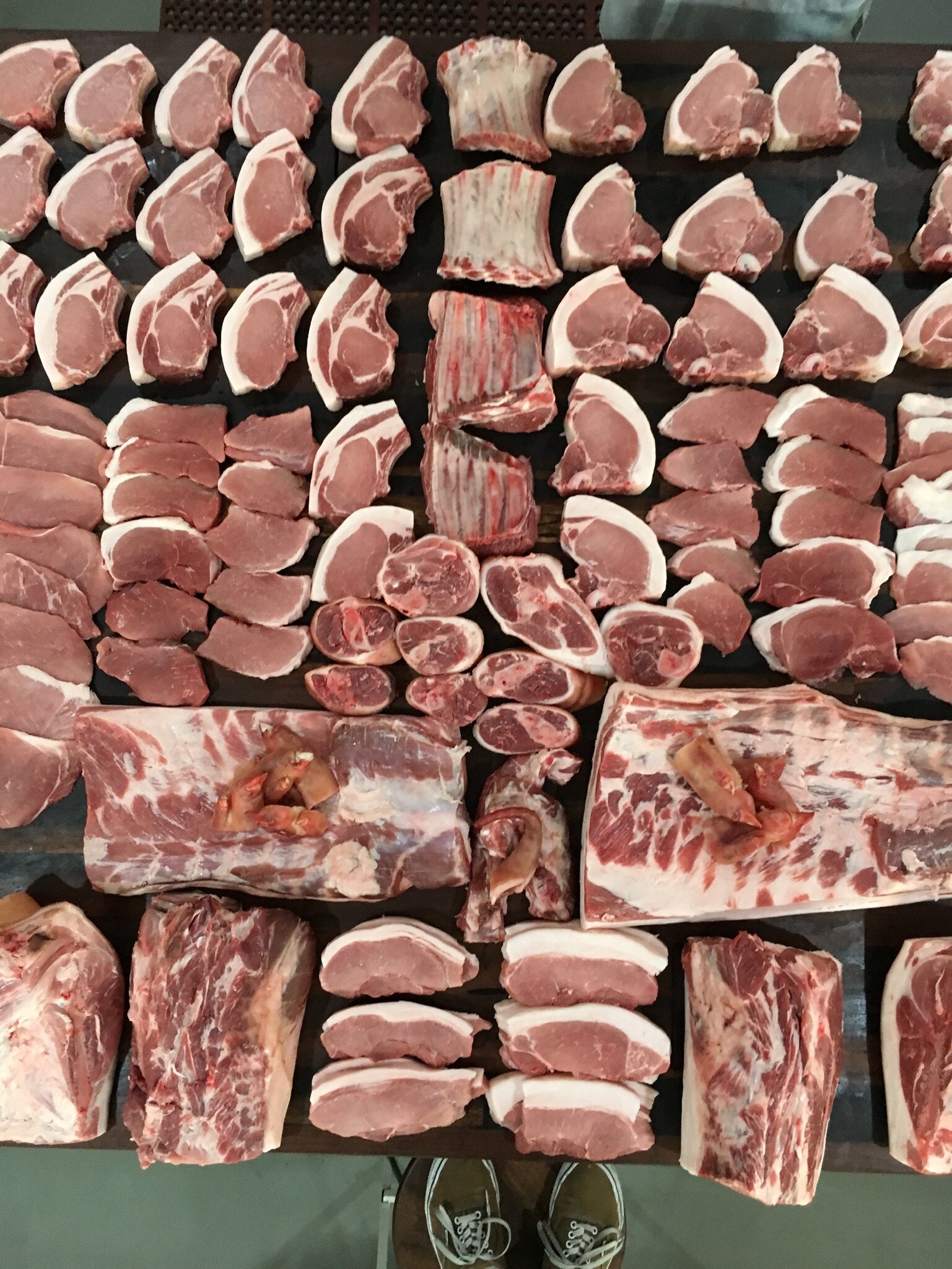Ordering On the Hoof
Folks are worried about meat. Can we get our favorite cuts? Is there enough supply? What do we do? So it may not come as a surprise that we’ve been getting a lot of requests for entire animal purchases, what we call “on the hoof.” This is something we’ve done for our guests since we opened our doors five years ago, but because of all the requests in the last few weeks, I thought I’d share some pointers on why and how to order “on the hoof,” and things to think about before making your purchase.
Why “On the Hoof?”
It saves money. Getting your meat 50% to 200% cheaper per cut—especially your steaks—just makes sense. Sustainability also motivates folks because when the entire animal is purchased, you know nothing is going to waste. The source is also crystal clear. All our animals come from the same farms you’ll find in our shop. This means that quality will be consistent. Finally, buying whole animal gives you the peace of mind that you always have a freezer full of meats to make dinner.
If you’re nodding your head to any or all of these reasons, then let’s get down to the business of ordering.
Which protein?
You can order beef, pork, or lamb on the hoof. However, each animal varies dramatically in size, weight, and cost, so it can be intimidating to decide which one to start with. I like to say, start with what you know.
If you’re a lover of beef, and you have a larger family or a few friends to share with, a quarter, half or whole cow is a great place to start. You’ll get the best bang for your buck, especially for steak lovers, and you’ll have plenty of supply for 3, 6 or even 12 months!
If pork is more your speed, buying a half or whole hog is equally satisfying. A whole pig is the perfect size for a family of two to four, and will last you four months if you eat pork 2-3 times a week. You also get lots of lard—my favorite cooking oil—and plenty of grind that we can make into your favorite sausages.
Lamb lovers should ONLY buy whole animal. It’s the smallest storage need, and won’t break the bank. I like to call lamb the gateway purchase for “on the hoof.” Not only can you fit most of a lamb in your standard kitchen freezer (although not much else), but it will also cost you less than 40% of other whole animal purchases.
Which End?
Getting educated with a diagram like this one is a good idea, and so is asking yourself how you like to cook. Do you BBQ a lot, use a smoker, roast, braise—all of the above? Do you have a favorite cut you can’t live without? If still stumped, here’s how I steer folks to which end.
Forequarter (Home Chefs): At the front of the animal, the forequarter is home to the brisket, chuck and ribeye. If you can’t live without these cuts, you’ve gotta start here. Otherwise, the forequarter is best for spare ribs, roasts, stew and grind. Other than that juicy ribeye—there are fewer searing cuts on the forequarter, so traditional steak eaters might want to opt for the other end. That said, the forequarter might tempt the more curious culinarios with its skirt steak, blade steak, and flat iron.
Hindquarter (Master Grillers): Found at the back of the animal, this section holds the shortloin with its surplus of steaks, including the porterhouse, t-bone, NY Strip, and tenderloin. Just behind that is the sirloin, the picanha and tri-tip. Working down from there, you find the flank and bavette. The largest muscles at the back of the hindquarter are the top, bottom, and eye rounds. These are good for stew and roasts, but also lots of delicious grind for that backyard BBQ.
Getting educated with a diagram like this one is a good idea, and so is asking yourself how you like to cook. Do you BBQ a lot, use a smoker, roast, braise—all of the above? Do you have a favorite cut you can’t live without? If still stumped, here’s how I steer folks to which end.
Where do I put it?
Any on the hoof purchase you make is gonna require a freezer. A whole lamb or pig will fit in one of those 7 cu. ft. freezers—which is about the size of a washer machine. Once you get into a quarter or half cow, you’re going to need a full-sized chest freezer (12-15 cu. ft.). A whole cow is best shared between two families, mostly so that you can get through the meat in six to eight months.
What’s the Wait?
We receive animals every 7-14 days, depending on the time of year and slaughter schedule. This means, it could be up to 21 days before your meat is delivered. When ordering whole animal, expect 2-3 weeks from when you place your order, to when you come to pick it up. If you can’t get down to the shop, ECB will deliver whole animal purchases for an additional fee.
What Do I Do with This Cut?
Inevitably, you’re going to get cuts you don’t recognize, or don’t know how to cook. Rest assured, when you buy with ECB, you’re always welcome to email us your cooking questions. It’s best to have a picture of the cut, and any tag or label with your note.
The most important part is to have fun enjoying the animal and cooking new recipes.





